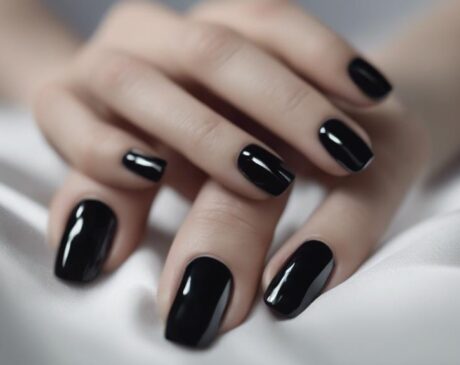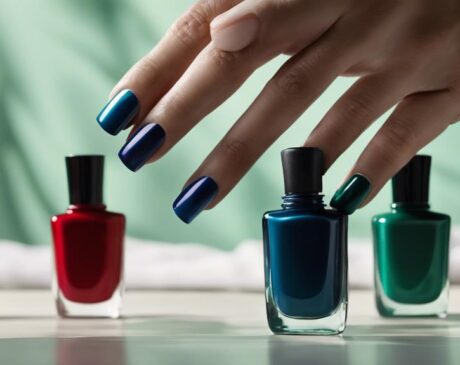Is It Bad to Constantly Have Gel Nails?
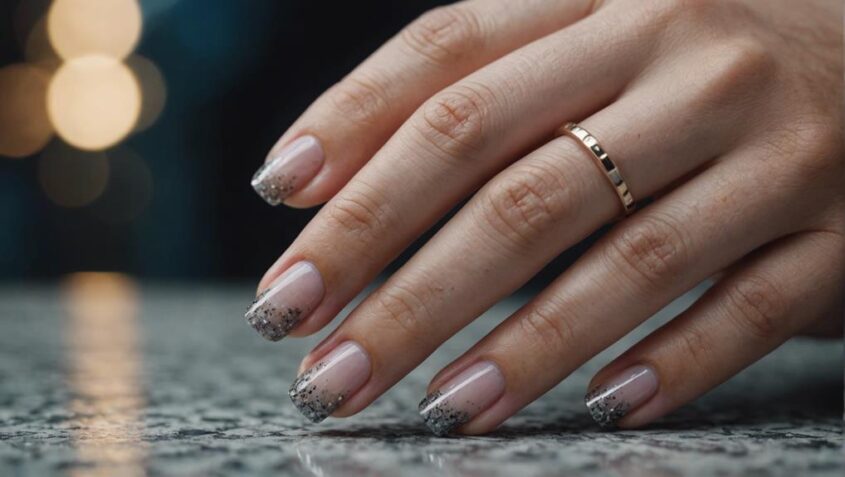
Constantly having gel nails can weaken natural nails over time due to potential damage and dryness from the chemicals in gel products. While gel nails offer durability and long-lasting shine, regular maintenance is crucial to prevent issues like thinning and brittleness. It's important to prioritize nail health by hydrating and caring for your nails, taking breaks from gel applications to strengthen the nail bed, and using strengthening treatments. Implementing proper removal techniques and considering alternative nail enhancements can also help maintain healthy nails. Preserve nail health for beautiful manicures by following expert recommendations and considering all aspects of nail care.
Key Takeaways
- Continuous wear weakens natural nails, causing brittleness and damage.
- Gel products can dehydrate nails, leading to thinning and weakness.
- Regular breaks from gel nails promote nail health and strength.
- Proper hydration and care counteract drying effects of gel products.
- Overall nail health should be prioritized to prevent damage from gel nails.
Pros of Gel Nails

Have you ever wondered about the advantages of opting for gel nails over traditional nail polish? Gel nails have gained immense popularity due to their durability and long-lasting shine. One of the primary benefits of gel nails is their longevity. Unlike traditional nail polish that chips and fades within days, gel nails can last up to two weeks or more without losing their luster. This makes them a convenient choice for individuals with busy schedules or those looking for a low-maintenance nail solution.
Another advantage of gel nails is their quick drying time. Traditional nail polish can take a significant amount of time to dry completely, leaving room for smudges and imperfections. In contrast, gel nails are cured under UV or LED light, which instantly hardens the polish, allowing you to resume your daily activities without the fear of ruining your manicure.
Furthermore, gel nails offer a wide range of colors and finishes that can elevate your nail art game. From glossy to matte finishes, gel nails provide endless possibilities for creativity and customization, making them a preferred choice for those seeking innovative nail designs.
Cons of Gel Nails
While gel nails offer numerous benefits, there are also drawbacks to consider when opting for this type of manicure. One of the main disadvantages of gel nails is the potential damage they can cause to the natural nails. The process of applying and removing gel polish often involves filing the nail surface, which can weaken the nails over time. Additionally, the chemicals used in gel nail products, such as the gel itself and the acetone used for removal, can lead to dryness, brittleness, and peeling of the nails.
Another downside of gel nails is the cost and time commitment. Compared to traditional nail polish, gel manicures are more expensive and typically require regular maintenance every 2-3 weeks to fill in the growth gap near the cuticle. This can add up in terms of both time and money spent at the salon. Lastly, the UV/LED light exposure during the curing process of gel nails raises concerns about skin damage and potential long-term health risks.
Nail Health Concerns
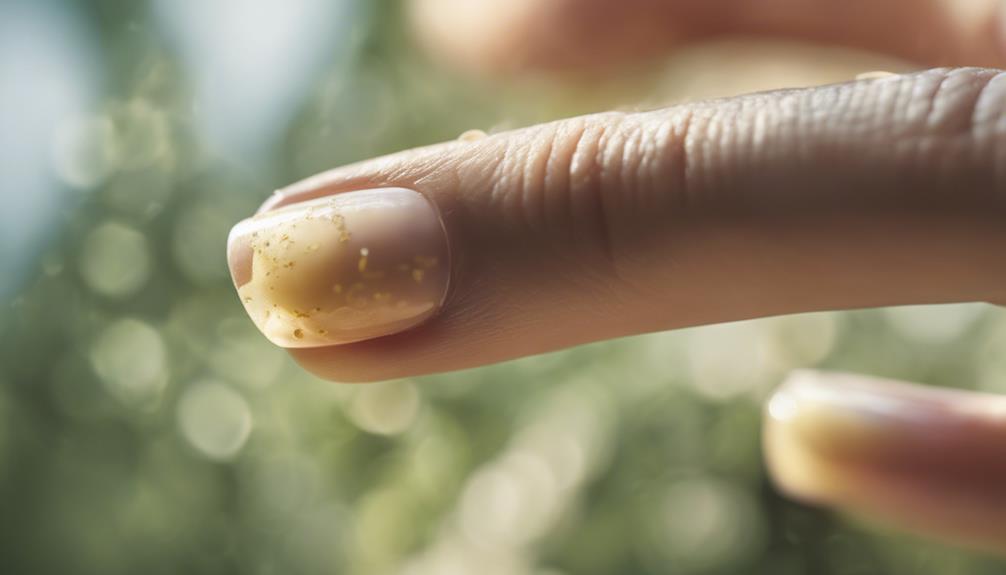
When considering the effects of constantly having gel nails, it's crucial to address the potential nail health concerns that may arise. These concerns primarily include the risk of nail weakening due to prolonged use of gel nail products, along with the importance of maintaining proper hydration and care for your natural nails to prevent damage. Understanding these aspects is essential for individuals who frequently opt for gel nails to make informed decisions regarding their nail health.
Nail Weakening Risk
Nail health concerns associated with constantly having gel nails include the risk of weakening the nails over time. The application and removal process of gel nails can lead to thinning and brittleness, making the natural nails prone to breakage and damage. The repeated exposure to chemicals and filing during gel nail appointments can strip the nails of their natural oils and moisture, further exacerbating the weakening effect. As a result, long-term use of gel nails without proper care and maintenance may compromise the overall health and strength of the nails. To mitigate this risk, it is essential to prioritize nail health, incorporate strengthening treatments, and give the nails regular breaks from gel applications to allow for recovery and rejuvenation.
Hydration and Care
Concerns regarding hydration and care for nails are paramount when considering the potential risks associated with constantly having gel nails. Proper hydration is essential to maintain the health and strength of natural nails, especially when exposed to the chemicals and processes involved in gel nail applications. To mitigate the effects of dehydration and potential damage, innovative nail care solutions such as cuticle oils, hydrating creams, and regular nail treatments are recommended. Implementing a routine that focuses on nourishing and moisturizing the nails and surrounding skin can help counteract the drying effects of gel products, promoting overall nail health. By prioritizing hydration and care, individuals can enjoy the aesthetic benefits of gel nails while ensuring the well-being of their natural nails.
Maintenance Tips for Gel Nails
Proper care and regular maintenance are essential for preserving the longevity and appearance of gel nails. To ensure your gel nails remain in top condition, here are some innovative maintenance tips:
Maintenance Tips for Gel Nails:
| Tip | Description | Frequency | Benefit |
|---|---|---|---|
| Keep Nails Dry | Avoid prolonged exposure to water and moisture. | Daily | Prevents lifting and premature chipping. |
| Moisturize Cuticles | Apply cuticle oil regularly to keep them hydrated. | 2-3 times a week | Promotes healthy nail growth and prevents dryness. |
| Use Gloves | Wear gloves when doing chores or using harsh chemicals. | When needed | Protects the gel coating from damage and discoloration. |
| Avoid Heat | Minimize exposure to excessive heat from activities. | As much as possible | Prevents gel softening and potential lifting. |
Alternatives to Gel Nails
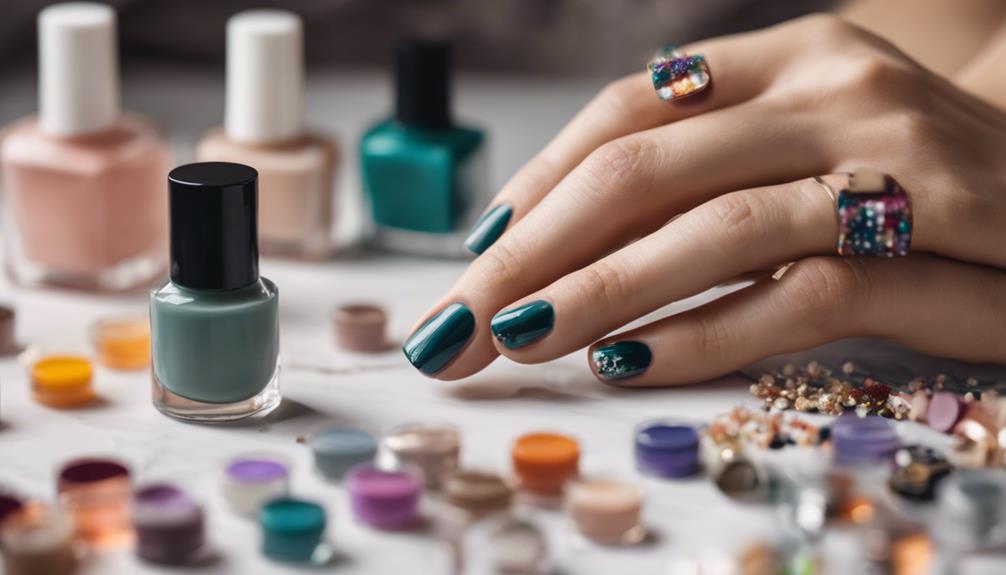
When considering different options for nail enhancements, individuals may explore alternatives to gel nails to achieve desired aesthetics and durability. One popular alternative is dip powder nails, which involve a process of dipping the nails into colored powder to create a long-lasting and chip-resistant finish. Another option is acrylic nails, which are known for their strength and versatility in design. Acrylics are created by mixing a liquid monomer with a powder polymer to form a durable overlay on the natural nail. For a more natural look, individuals can opt for silk or fiberglass wraps that provide added strength without the bulkiness of traditional extensions. Nail wraps are thin sheets of silk or fiberglass applied to the nail and sealed with a resin or glue. These alternatives offer a range of choices for those seeking durable and stylish nail enhancements without the use of gel.
Removing Gel Nails Safely
To safely remove gel nails, it is essential to follow proper techniques and precautions to protect the health and integrity of the natural nails. One common method involves soaking cotton balls in acetone, placing them on the nails, and wrapping each fingertip in foil to let the acetone break down the gel polish. However, this process can be time-consuming and may lead to dryness and weakening of the nails due to the acetone exposure.
Innovative techniques have been developed to address these concerns. One such method is using specially formulated gel polish removers that are less harsh on the nails. These removers contain conditioning agents to help nourish and strengthen the nails during the removal process. Another approach is the use of steam or gentle heat to aid in loosening the gel polish without the need for prolonged acetone exposure. These advancements aim to provide a safer and more nail-friendly way to remove gel nails, ensuring that your natural nails remain healthy and strong after each gel manicure.
Expert Recommendations
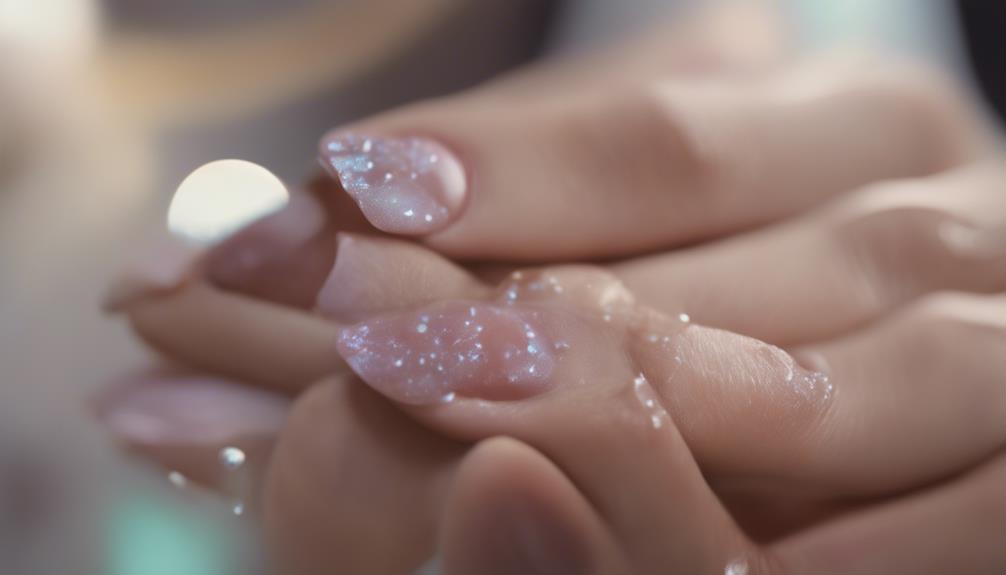
When it comes to maintaining healthy nails, expert recommendations play a crucial role. Nail health concerns and proper removal techniques are key points that professionals emphasize. Following expert advice can help individuals make informed decisions about their gel nail habits.
Nail Health Concerns
Expert recommendations emphasize the importance of allowing your nails to breathe and rest between gel nail applications to maintain optimal nail health. Continuous wear of gel nails without breaks can weaken the nail bed, making nails brittle and prone to breakage. To promote nail health, it is advised to incorporate regular breaks from gel nails, opt for strengthening treatments, and keep the nails hydrated with cuticle oil. Additionally, maintaining a balanced diet rich in vitamins and minerals can also support nail health. By following these practices, individuals can enjoy the benefits of gel nails while prioritizing the overall health and strength of their natural nails. Remember, healthy nails are the foundation of beautiful and long-lasting manicures.
Proper Removal Techniques
Implementing appropriate removal techniques is crucial for maintaining the health and integrity of your nails after having gel nail applications. Improper removal can lead to nail damage and weaken the nail bed. To ensure a safe and effective removal process, consider the following expert recommendations:
| Removal Technique | Description | Benefits |
|---|---|---|
| Acetone Soak | Nails soaked in acetone to dissolve the gel polish | Gentle on nails, minimizes damage |
| Foil Wrap Method | Wrapping nails in acetone-soaked cotton and foil | Enhances polish removal, time-efficient |
| Gentle Buffing | Lightly buffing off remaining gel after soaking | Smooth finish, reduces nail thinning |
Frequently Asked Questions
Can Gel Nails Cause Allergic Reactions?
Gel nails can indeed cause allergic reactions due to the chemicals present in the products. It is essential to be aware of any sensitivities and consult a professional if symptoms occur for proper evaluation and treatment.
Will Gel Nails Weaken My Natural Nails?
Frequent gel nail application can lead to weakened natural nails due to the removal process. The buffing required to roughen the nail plate for gel adhesion, along with acetone soak-offs, can result in thinning and brittleness.
How Often Should Gel Nails Be Filled?
The frequency of gel nail fills varies based on individual nail growth, typically recommended every 2-3 weeks to maintain a polished appearance. Consult with a professional manicurist for personalized advice on maintaining healthy nails while enjoying gel enhancements.
Can Gel Nails Damage the Nail Bed?
Gel nails, when improperly applied or removed, can potentially damage the nail bed. Vigilant care and professional application are crucial to prevent harm. Educating clients on proper maintenance can safeguard against long-term issues.
Are There Any Long-Term Effects of Gel Nails?
Long-term effects of gel nails may include weakening of natural nails, potential for nail bed damage, and increased risk of infection if not applied and removed properly. Regular maintenance and breaks can help mitigate these risks.

